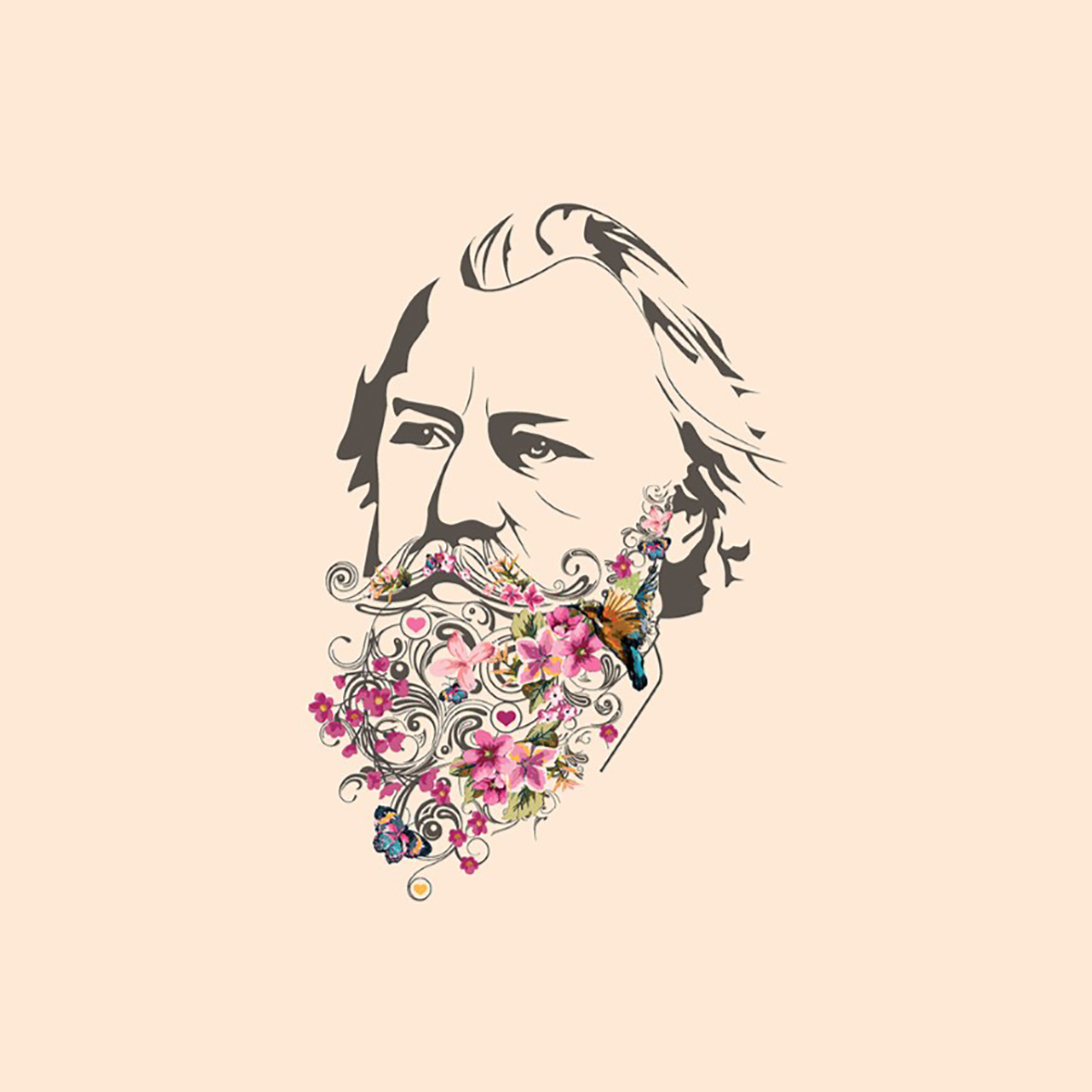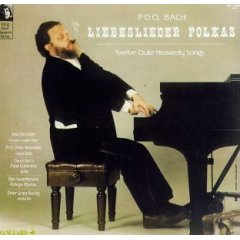
- This event has passed.

Lucy and Friends in Concert: An Evening of Love and Laughter
September 28, 2018 at 7:30 PM
| FreeLIEBESLIEDER WALTZES, OP. 52 (JOHANNES BRAHMS)
LIEBESLIEDER POLKAS (P.D.Q. BACH)
FRIDAY, SEPTEMBER 28
7:30 PM
GREAT HALL
FREE ADMISSION
POST-CONCERT RECEPTION
LUCY CREECH, SOPRANO
NATALIE ARDUINO, ALTO
ROBERT WILSON, TENOR
DAVID GROGAN, BASS
H. MICHIE AKIN & BRIAN BENTLEY, PIANO FOUR HANDS
About the music (adapted from Wikipedia articles):
 Johannes Brahms’ Liebeslieder Waltzes, Op. 52 is a collection of love songs in Ländler style for voices and piano four hands. The lyrics for the Liebeslieder come from Georg Friedrich Daumer’s Polydora, a collection of folk songs and love poems. While there is no record indicating the inspiration for the Waltzes, there is speculation that Brahms’ motivation for the songs was his frustrated love for pianist Clara Schumann, composer Robert Schumann’s wife.
Johannes Brahms’ Liebeslieder Waltzes, Op. 52 is a collection of love songs in Ländler style for voices and piano four hands. The lyrics for the Liebeslieder come from Georg Friedrich Daumer’s Polydora, a collection of folk songs and love poems. While there is no record indicating the inspiration for the Waltzes, there is speculation that Brahms’ motivation for the songs was his frustrated love for pianist Clara Schumann, composer Robert Schumann’s wife.
The Liebeslieder Waltzes were completed in 1869 and were first performed January 5, 1870. One aspect of the Liebeslieder Waltzes that possibly contributed to the work’s positive reception was that Brahms composed them with reference to Johann Strauss, who was considered the “Waltz King.” With such another well-known composer attached to the work, the audience would have enjoyed the tribute. To some, Brahms revived chamber music.
The Liebeslieder Waltzes are written in a popular style, but do not lose Brahms’ signature compositional complexity. Scored for piano four hands and voices ad libitum, the piece can easily accommodate many different-sized ensembles. Although today they are part of the standard choral repertoire, Brahms more likely intended them to be played in parlors or informal home gatherings rather than in concert halls. Immediately successful, these waltzes were responsible for much of his personal wealth, and solidified his reputation with the general music-buying public in Vienna and Europe.

Liebeslieder Polkas for Mixed Chorus and Piano Five Hands, S. 2/4, is actually the music of American composer Peter Schickele (b. 1935), written under the comic pseudonym of P. D. Q. Bach. He describes this work as “the first opus of P.D.Q. Bach to be discovered in which he inflicted his music on the work of well-known poets, or even known poets, for that matter.”
Schickele gives a humorous fictional biography of the composer, according to which P. D. Q. Bach was born in Leipzig on April 1, 1742, the son of Johann Sebastian Bach and Anna Magdalena Bach; the twenty-first of Johann’s twenty children. He is also referred to as “the youngest and oddest of Johann Sebastian’s 20-odd children.” According to Schickele, P. D. Q. “possessed the originality of Johann Christian, the arrogance of Carl Philipp Emanuel, and the obscurity of Johann Christoph Friedrich . . . His musical life has been divided into three creative periods: the Initial Plunge, the Soused Period, and Contrition. The middle period was by far the longest of the three, and was characterized by a multiplicity of contrapuntal lines and a greater richness of harmony due to almost constant double vision. It was during this period that he emulated (i.e., stole from) the music of Haydn and Mozart, but his pathetic attempts to be au courant were no more successful than his pathetic attempts to be passé had been during the Initial Plunge; having to cope with the problems that accompany immense popularity was something P.D.Q. Bach managed to avoid. It has been said that the only original places in his music are those places where he forgot what he was stealing.”
Schickele’s works attributed to P. D. Q. Bach often incorporate comical rearrangements of well-known works of other composers. There is often a startling juxtaposition of styles within a single P. D. Q. Bach piece. The humor in P. D. Q. Bach music often derives from a violation of audience expectations, such as repeating a tune more than the usual number of times, resolving a musical chord later than usual (or not at all), unusual key changes, excessive dissonance, or sudden switches from high art to low art.
The titles in this collection also reveal Schickele’s wicked sense of literary humor:
To His Coy Mistress (Andrew Marvell)
To the Virgins, to Make Much of Time (Robert Herrick)
The Passionate Shepherd to His Love (Christopher Marlowe)
Why So Pale and Wan, Fond Lover? (Sir John Suckling)
It Was a Lover and His Lass (William Shakespeare)
The Constant Lover (Sir John Suckling)
Song to Celia (Ben Johnson, adapted by P.D.Q. Bach)
Farewell, Ungrateful Traitor (John Dryden)
Who is Sylvia? (William Shakespeare)
A recording of the work was released on Vanguard Records in 1980, with a cover image of Schickele mimicking the famous image of Johannes Brahms at the piano.
